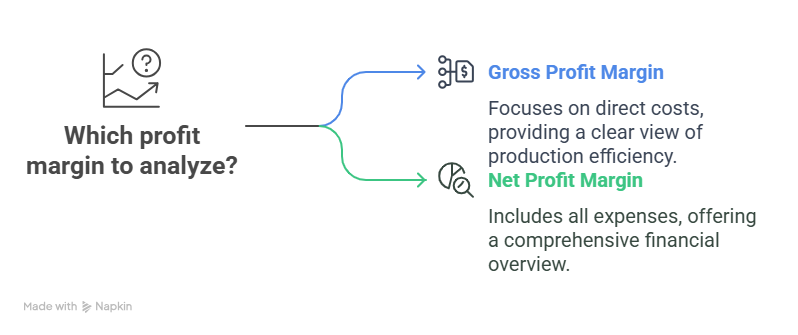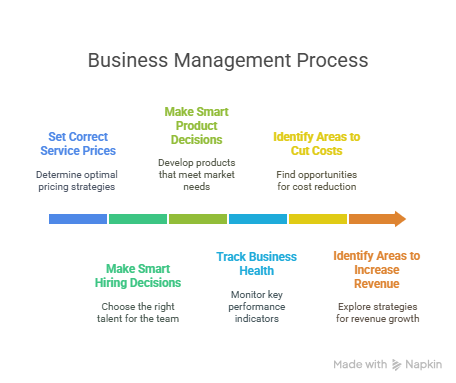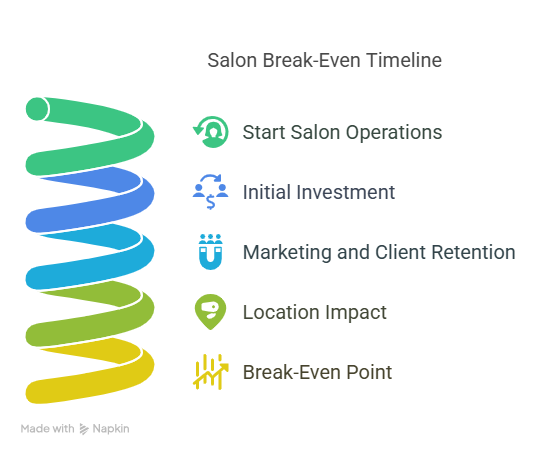Running a salon is more than just styling hair and offering beauty services — it’s about running a profitable business. One of the most common questions salon owners in India ask is: “What is the salon profit margin, and how can I improve it?” In this detailed guide, we’ll break down everything you need to know — from understanding the numbers to boosting your bottom line.
Whether you run a small parlour in a residential area or a high-end salon in a commercial hub, this blog is tailored to help Indian salon owners understand and grow their business’s profitability.
Understanding Salon Profit Margins
What Does “Profit Margin” Mean in a Salon Business?
Profit margin refers to the percentage of revenue that remains as profit after covering all your costs. For a salon, this includes rent, salaries, product costs, utilities, and marketing expenses.
In simple terms:
Profit Margin = (Profit ÷ Total Revenue) × 100
If your salon earns ₹1,00,000 in a month and expenses are ₹80,000, your profit margin is 20%.
Gross vs. Net Profit Margin in Salons
- Gross Profit Margin considers only direct costs (like products and staff commission).
- Net Profit Margin includes all expenses (rent, utilities, etc.).
Pro Tip: Aim for a gross margin above 50% and a net margin between 10%–20% to stay sustainable.

Why Tracking Your Salon Profit Margin Matters
Understanding your salon business profit margin helps you:
- Set correct service prices
- Make smart hiring and product decisions
- Track business health over time
- Identify areas to cut costs and increase revenue

Factors That Impact Salon Profitability
Salon Type and Service Pricing
The kind of salon you run plays a big role. For example:
- Luxury salons usually charge higher and earn better margins
- Budget parlours need high volume to stay profitable
Tip: Mix high-margin services like facials and treatments with popular basics like haircuts to boost your profit line.
Location and Footfall
A salon in a busy mall or commercial street may cost more in rent but will have higher walk-in traffic. Meanwhile, home-based or residential salons have lower expenses but also lower volume.
Evaluate:
- Rent vs. expected revenue
- Accessibility and visibility
- Target audience’s income level
Staff Salaries and Commission
Your team is your biggest asset — and cost. In India, staff wages and commissions often make up 40%–50% of salon expenses.
To manage this:
- Set service targets for incentives
- Cross-train staff for multiple roles
- Monitor idle time
Product Sales and Inventory Costs
Retail product sales can significantly improve your profit margins. However, overstocking or underpricing eats into your profits.
Try this:
- Promote high-margin beauty products
- Bundle services + products for better value
- Track stock turnover regularly
Overheads and Operating Expenses
Every rupee counts. Track hidden costs like:
- Utilities
- Software subscriptions
- Marketing and promotions
- Repair and maintenance
Use salon management software to track and reduce unnecessary expenses.
Average Salon Profit Margins in India and Globally
Typical Profit Margins for Indian Salons
In India, profit margins vary based on location, service quality, and scale. On average:
Salon Type | Net Profit Margin |
Small Local Parlour | 8%–12% |
Mid-Level Salon | 12%–18% |
Premium/Franchise Salon | 15%–25% |
Global Comparisons: Where Do Indian Salons Stand?
Globally, salons see net margins between 10%–20%, similar to Indian benchmarks. However, operational costs in India are lower — which means smart management can lead to higher margins.
Case Study: Profit Margin Breakdown of a Mid-Size Urban Salon
Let’s say your salon in Mumbai earns ₹2,50,000 monthly.
Here’s a typical breakdown:
- Rent & Utilities – ₹40,000
- Staff Salary – ₹1,00,000
- Products – ₹30,000
- Marketing – ₹10,000
- Miscellaneous – ₹10,000
Net Profit = ₹60,000 ⇒ Profit Margin = 24%
How to Calculate Your Salon Profit Margin
Basic Formula to Calculate Profit Margin
Use this simple formula:
Net Profit Margin (%) = (Revenue – Expenses) ÷ Revenue × 100
Make it a monthly or quarterly habit.
Example Calculation for a Small Beauty Salon
Let’s break it down:
- Revenue: ₹1,20,000
- Total Costs: ₹1,00,000
- Profit: ₹20,000
- Profit Margin = (20,000 ÷ 1,20,000) × 100 = 16.6%
This is a healthy margin for a small, service-based business.
Tools and Software for Salon Financial Tracking
To track and calculate margins more accurately, try:
- YourSalon software for daily performance and revenue reports
- Google Sheets or Excel for basic tracking
- Tally or QuickBooks for accounting and tax purposes
Tips to Improve Your Salon Profit Margin

Streamline Operational Costs
- Switch to energy-efficient lighting
- Outsource where possible (e.g., digital marketing)
- Negotiate supplier discounts
Upsell High-Profit Services and Products
- Promote premium facials or keratin treatments
- Encourage stylists to suggest add-ons like hair spas
- Offer loyalty-based discounts or packages
Retain Loyal Clients with Memberships
Repeat clients = repeat revenue. Try:
- Monthly or quarterly membership programs
- Referral bonuses
- Early bird booking discounts
Train Staff for Efficiency and Upselling
A trained staff = increased productivity and customer satisfaction.
- Offer regular workshops
- Set upselling targets with incentives
- Improve time management on services
FAQs About Salon Profit Margins
What’s a Good Profit Margin for a Salon?
A net profit margin of 15%–20% is considered good. High-performing salons may achieve even more with the right service mix and cost control.
How Long Does It Take for a Salon to Become Profitable?
Most salons take 6–12 months to break even. The timeline depends on:
- Location
- Initial investment
- Marketing and client retention strategies

Do Franchise Salons Have Better Profit Margins?
Franchise salons benefit from brand trust and systems but may have royalty fees. However, they often enjoy better profit margins due to higher client inflow and structured operations.
How to Calculate Salon Profit Margin Easily?
Use this formula:
(Total Revenue – Total Expenses) ÷ Total Revenue × 100
Or automate it using salon POS or management software like YourSalon.
Can Product Sales Increase My Profit Margin?
Absolutely! Retail product sales have high margins — up to 40%–50%. They can make a big difference in your monthly profit without adding operational strain.
Final Thoughts on Salon Profitability
Building a profitable salon isn’t just about increasing prices — it’s about understanding your numbers, optimizing operations, and offering consistent client experiences. By tracking and improving your salon profit margin, you can make smart business decisions that lead to long-term success.
Remember: Even small improvements in cost control or upselling can create a big impact over time.



